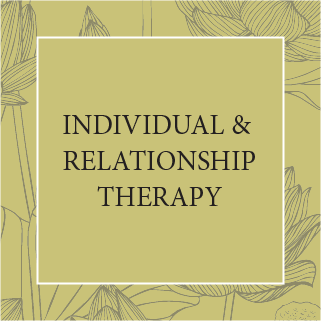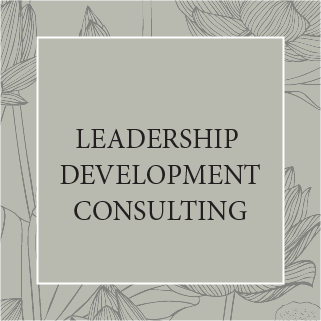Stay up to date with the latest from the blog!
NOT JUST SUPERFICIAL CHANGE, BUT DEEP AND LASTING CHANGE.
Download my FREE EBOOK on the Foundations Of Well-Being:
9 SCIENTIFICLY-BASED PRACTICES TO HELP YOU INCREASE HARMONY, HAPPINESS AND HEALTH.
PLUS get instant access to my FREE EBOOK on the Foundations Of Well-Being:
9 SCIENTIFICLY-BASED PRACTICES TO HELP YOU INCREASE HARMONY, HAPPINESS AND HEALTH.

OUR WORK TOGETHER
Some thoughts I have about therapy
Whether I work therapeutically with individuals, couples or families, provide clinical consultation, or support leaders in their development and practices, my initial and ongoing consideration is the quality of our relationship.
This means that I am interested in hearing about the concerns you have, how they are impacting your life and work, and what your aspirations are for change.
Also, this means that key conditions need to be present in our relationship and that I hold a special responsibility to recognize and attend to cultivating interpersonal safety.
This focus is backed by science, which confirms that human development and well-being are inextricably linked to qualities of the relationships we have with each other as well as the world around us. In fact, the very structure and function of our brains and bodies are connected to our capacity to be consciously aware of our own internal experiences as well as what transpires between us, and those with whom we relate to.
Therefore, I seek to facilitate and support people’s development for a greater capacity to be mentally, emotionally, and physically as well as they possibly can be. I have come to this belief by witnessing the resiliency and creativity of people with whom I have been privileged to work with. As well, findings from neuroscience research have uncovered a phenomenon called neuroplasticity.
What this term means is that throughout our lives, we can change the very structure and function of our brain and nervous system through new learning along with focused practices that promote well-being.
Finally, I am hopeful, that change is possible. Not just superficial change, but deep and lasting change.

KEY THEORIES THAT
INFLUENCE ME
Leadership and Organizational Theory
Leadership and organizational change research and theory is a vast field. My approach to leadership development has been informed by a number of approaches that embrace whole-person and complex systems perspectives; for example, brain-based leadership, mindful leadership, Dialogism and Dialogical-Self Theory , Theory-U, and Complex Adaptive Systems (CAS), to name a few. This work is fundamentally grounded in relational neuroscience and relational approaches to leadership.
My doctoral research explored leadership from an Interpersonal Neurobiology perspective. This research is the first of its kind, articulating the multiple levels this framework has influenced and shaped leaders’ practices, development, and identity. It has profoundly impacted my own work as a leader in the field of mental health, as well as my leadership consulting practice.
Interpersonal Neurobiology
A fascinating field called Interpersonal Neurobiology (IPNB) influences how I see the experiences that people bring forward as well as what kind of change needs to take place in order to facilitate integration, which is a hallmark of wellness.
IPNB is a vast and growing interdisciplinary field that draws on scientific findings from quantum physics, neurobiology, psychology, attachment theory, and neuroscience with research in human development.
One of IPNB’s core principles is that the quality of our relationships directly shapes the function and structure of our brain and nervous system throughout our lives. Further, it recognizes key processes of the embodied brain and how we can use our minds in the service of functional and structural change that can be intentionally harnessed for change.
Mindfulness and Focused Practices
IPNB shows that we are able to participate in our own health through focused practices such as reflection, mindfulness, and other awareness activities. We can contribute to integration within ourselves and in our relationships with others, through actively developing greater awareness. This conscious engagement of mental (cognitive, emotional) and neurobiological processes is key for wellness in all aspects of lived experience including personal and professional realms.
I often support people in fine-tuning these practices to their unique needs and preferences.
Compassion Practice
Developing greater compassion is a mindfulness-based practice that is very powerful in transforming our relationship with others and ourselves. It has been shown to be a more powerful indicator of well-being than self-esteem. Self-compassion accesses the mind and embodied brain in ways that supports whole-person change.
I frequently draw upon ways to tap into this powerful, heart-centered resource, which serves to enrich and strengthen, transform and heal.
Body-Centered Practice
One of IPNB’s tenants is that awareness of our whole body, from the inside, is imperative for integrated functioning and well-being. Learning practices that bring intentional awareness into the body is key for wellness. This honors the biological necessity for top-down (brain to body) and bottom-up (body to brain) linkages, where the energy and information of the nervous system can flow, be deeply understood, and accessed for the cultivation of wellness.
Therefore, I support people in developing the capacity for embodied consciousness that is necessary for transformative change.
Relational Theory
The Stone Center’s Relational Cultural Model brings attention to the multiple-intersecting experiences that impact human development such as gender, sexual orientation, class, and race. Mental and physical problems are seen to be outcomes of disconnection in personal as well as larger societal and cultural relational contexts within which we develop and function.
This framework recognizes that individual wellness and growth are inextricably linked to relational capacities that promote connection, and that suffering occurs with acute or chronic disconnection in relationships.
Attachment research and theory also plays a significant role in understanding patterns that influence both personal and work relationships. Understanding how implicit memory of early relational experiences can shape mental, (i.e., emotions, thoughts, perceptions), and behavioral adaptations provides opportunities for precisely considered interventions and practices that can facilitate neuroplastic and experiential change.
CBT, DBT, and EMDR
I also integrate principles and practices from cognitive behavioral and dialectical behavioral therapy in my work. These top-down approaches can assist in recognizing patterns of thinking and behaving that deter from optimal functioning. Then, tools and strategies can assist in challenging and reshaping thoughts and behaviours that serve neuroplastic change.
I also use EMDR in my therapeutic work. This unique approach is used to support the integration of traumatic experiences and to transform anxiety. Through the bi-lateral stimulation of the brain, through non-invasive methods, memory is integrated in ways that free people from limiting patterns.



Change is possible.
NOT JUST SUPERFICIAL CHANGE, BUT DEEP AND LASTING CHANGE.
Download my FREE EBOOK on the Foundations Of Well-Being:
9 SCIENTIFICLY-BASED PRACTICES TO
HELP YOU INCREASE HARMONY, HAPPINESS AND HEALTH.
